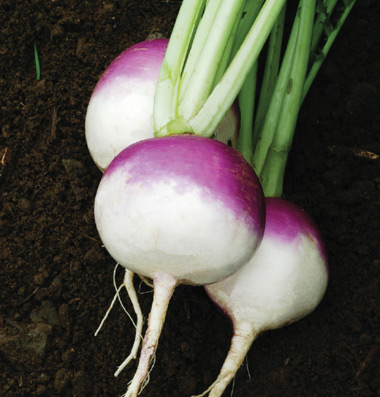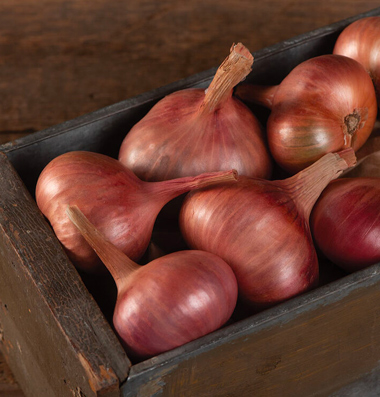- Chamomile Rake | Rust Prevention & Removal | Tech Sheet (PDF)
- Highbush Blueberry Rake | Maintenance, Rust Prevention & Removal | Tech Sheet (PDF)
- Baby Leaf Harvester | Instructions for Safety, Assembly, Operation & Maintenance | Tech Sheet (PDF)
- Carrot Growing Guide | Carrot Harvesting, Handling & Storage - Part 3
- CoolBot–Air Conditioner Compatibility | Use, Temperature, Cooler Size & Insulation + Brand Recommendations | Tech Sheet (PDF)
- CoolBot | How to Build a Walk-in Cooler for Your Small Farm (PDF)
- CoolBot | Instruction Manual & Troubleshooting Guide (PDF)
- CoolBot Pro | Quick-Start Guide (PDF)
- CoolBot Pro | Spec Sheet (PDF)
- Cut-Flower Harvesting & Post-Harvest Care | Best Practices from Pros in the Slow Flower Community
- Getting Started with Value-Added Foods & Farm Goods
- Cooling & Storing Chart for Freshly-Harvested Summer Produce
- Salanova Lettuce | Cutter Tool | Tech Sheet (PDF)
- Seed Storage Guidelines | Charts & Notes on Longevity for the Beginning Seed-Saver
- Classic Storage Crops | Post-Harvest Handling & Storage Guidelines
- Video: CoolBot® | Installation Instructions & Recommendations
- Video: CoolBot PRO | Installation Instructions & Recommendations
- Video: Sauce Master II Fruit & Vegetable Strainer | Quick Demo
- Video: Using Blanching Caps to Blanch Frisée (Chicory) in the Field at Satur Farms
- Video: CoolBot PRO | Tutorial with Jean-Martin Fortier
- Video: The Procona System for All-in-one Flower Harvest, Transport & Display
- Video: Baby Leaf Harvester for Greens, Mesclun, Spinach, Lettuces & Tender Aromatics
- Video: Gorilla Tubs® (formerly known as TubTrugs®)
- Video: Johnny's Harvest Knives, Machetes, and Shears
- How to Set up a Winter Cool Room | CoolBot® + Inkbird + Space Heater
- Video: Tips & Recommendations for Dried Flowers • Tutorial with Joy Longfellow
- Chrysal Clear Bulb Flower Conditioner | SDS
- Chrysal Clear Universal Flower Conditioner | SDS
- Chrysal CVBN Flower Conditioner | SDS
- Chrysal Professional 2 Transport & Display T-Bag | SDS
- Chrysal Professional 1 Hydration Solution | SDS
- Video: Choosing & Growing Paste Tomatoes for Sauce-Making • with Niki Jabbour
- Chrysal Clear Bulb T-Bag | Cut-Flower Conditioner | SDS
- Chrysal Professional 3 Vase Solution Powder | SDS
- Chrysal Classic Professional 2 Transport & Display (Holding) Solution | SDS
Post-Harvest Handling & Storage Guidelines for Classic Storage Crops
On This Page
- 4 Temperature/Humidity Combinations
- Practicalities
- Storage Recommendations by Crop
- Learn More
4 Basic Temperature/Humidity Combinations for Classic Storage Crops
Classic storage crops are products that are held post-harvest in a semi-controlled or controlled environment, for use/sale over the ensuing weeks and months. Most are harvested in the fall, then held for winter storage under 4 main combinations of low-temperature/humidity:
- Cold & Dry
- Cold & Moist
- Cool & Dry
- Cool & Moist
Crops that fit into the classic storage-crop category include most—though not all—root vegetables and tuberous vegetables; hard-shell cucurbits, that is, winter squashes and pumpkins; and some head crops, typically those that are brassicaceous, such as cabbages.
Grains, beans, and dried flowers, too, can be considered types of storage crops, though they are handled differently.
Optimal storage conditions as well as holding times vary by crop and type—and in some cases by variety, environmental conditions, and season or timing of harvest. Here's a quick guide to post-harvest handling and storage of classic storage crops. First we cover some practical considerations, then provide basic, crop-by-crop specifics.
Practical Considerations
A lot of people shy away from storage because they think they have to maintain perfect conditions to keep the produce in storage as long as possible, but that's not necessarily the case. Here are some guidelines to keep in mind.
- We give the ideal temperature ranges for storage, but you can get a decent storage life out of most crops even if conditions are not perfect.
- For all the crops that should be stored at 32°F (0°C), you can expect to get half the storage life (2–3 months for some things may be quite reasonable) by storing them in temps up to 50°F (10°C), provided there is high humidity (except for onions, which like it a little drier).
- A lot of people live in climates where they have this type of situation in their garage, basement, or mud room. Older structures and foundations may even have an existing root cellar or the potential makings (or ruins) of one.
- If you can get as close as possible to the target temperature and humidity, and if the crop is prepared properly, it will keep for a good while.
- We also recommend storing carrots, beets, turnips, leeks, celeriac, and all brassicas in perforated bags. Most crops will be able to maintain high humidity better if they are somewhat enclosed, but the bags must breathe well enough for air exchange to prevent decay.
- Another thing to try to keep in mind is to eat what you store, and don't wait! Some people try to stretch the life of their storage crops as long as possible, and in doing so can be reluctant to eat them early on. This can really backfire if things start to rot for whatever reason. Even under ideal conditions, crops can go bad at any time. You are better off having enjoyed the last of your veggies in February than you are throwing out half your stash in April.
Root Crops & Tubers
Because most people think of root crops and tubers first when they think of storage crops, we provide information for them first, then alliums, brassicas, and curcurbits, including a few examples of our recommended favorites and top-performing varieties.
Beets & Carrots • Tips for Post-Harvest Handling
- It is ideal to harvest in dry conditions, when the soil will easily slough off of the roots.
- For beets and carrots, it is also important to trim the tops off close to the root—leave about
¼" of tops material there. Leaving any more than this will invite decay, but not leaving anything will hasten the drying out of the root. - Whether or not to wash these root crops before storage may depend on your situation, when it is most expedient to wash them, your wash-pack configuration, and market preferences.
- Another consideration is your soil microbial health. Know that getting them wet can encourage decay, and washing them can remove not just soilborne disease but also beneficial bacteria occupying the thin film of soil on the roots that can help fight decay.
- Instead of washing before storage you can gently remove soil clods from the roots, being careful not to use anything abrasive that may scratch the root surface.
- Then wash them as you remove them from storage for eating throughout the winter.
- If you elect to wash them beforehand, allow them time to air-dry before placing in storage.
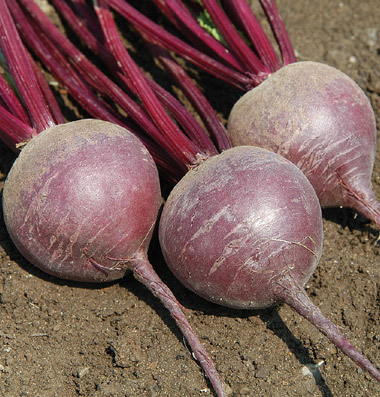
Beets—Cold & Moist
- Harvest before the first hard freeze, at about
1¼–3" in diameter. - Trim tops (stems and leaves) to
¼" in length. - The taproot should be cut off with a sharp knife prior to storage.
- To store, pack in perforated plastic bags or in sealed containers filled with damp sand.
- Beets of all varieties will keep for
3–5 months when stored at 32°F (0°C) and90–100% humidity.
Carrots—Cold & Moist

- Harvest carrots for storage before the first hard freeze.
- Trim tops to
¼" length. To store, place in perforated bags, or pack in damp sand in sealed containers. - Carrots are sensitive to ethylene gas emitted by certain fruits (such as apples), so be sure to keep them separate.
- Store at 32°F (0°C) and
90–100% humidity.
Tip: 'Bolero' is the best variety for harvesting in late fall, and will hold for up to 6 months under the above-noted conditions.
Celeriac (Celery Root)—Cold & Moist
- Harvest celeriac prior to the first hard freeze.
- Trim tops to ¼" in length.
- Store harvested celeriac with soil and roots intact.
- Can be placed in perforated bags or packed in damp sand in a sealed container for storage.
- Clean before selling.
Tip: 'Brilliant' is an excellent celery root choice for storing, with large, round, solid roots that will hold nearly as long as a carrot under the same conditions.
Kohlrabi—Cold & Moist

- Harvest storage kohlrabi while the tap root is still round, before it begins to elongate.
- Remove leaf stems and tops prior to storing.
- Can be placed in peforated bags for storage.
- Store at 32°F (0°C) and
90–100% humidity.
Tip: 'Kossak' is a variety that maintains its dense white flesh—still sweet, delicious, and tender—with storage for 2–4 months.
Parsnips—Cold & Moist
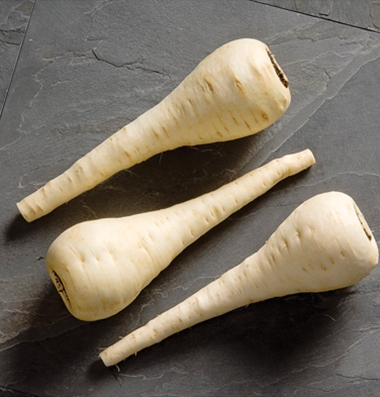
- Mow tops then broadfork or undermine, or use root crop harvester.
- Parsnips require a full season of growth, and their sweet flavor is brought on by cold weather. Harvest in the fall or leave in the ground through the winter.
- When harvesting in early spring, dig before the tops begin to re-grow for the highest quality roots.
- Storage conditions are the same as carrots—hold unwashed (or washed) in perforated bags or bins at 32°F (0°C) and 95% relative humidity—but they should be handled with more care as they bruise more easily.
Potatoes—Cold & Moist
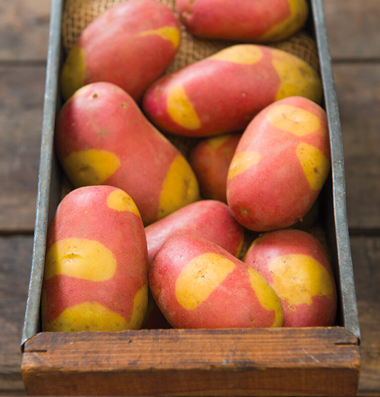
- Plants are mature when foliage naturally dies back. Late-maturing varieties may need to be flail-mowed to encourage maturity prior to frost.
- Tubers should remain in the ground for at least 2 weeks after foliage has died back to allow for skin set. Do not allow tubers to freeze, as they will become watery and unusable.
- Dig tubers and allow skins to air dry for a day if rainy weather is not expected.
- Do not wash tubers for storage or put wet tubers directly into storage.
- Place in mesh bags, crates, or vented boxes.
- Store in a dark cooler at 40°F (4.4°C) and 95% relative humidity.
- Healthy tubers can store for 5 months or more under the proper conditions.
Tip: Varieties with excellent storage potential include 'Yukon Gold', 'Kennebec', 'Elba', and 'Pinto Gold'. For more information, see our Potato Varieties Comparison Chart.
Rutabaga—Cold & Moist
- Harvest rutabaga when roots reach the desired size, preferably after a couple of good frosts.
- Remove tops.
- Store at 32°F (0°C) and
90–100% humidity. - Clean roots may be waxed prior to delivery at market to prevent drying, but this step is not necessary.
Tip: 'Helenor' and 'Laurentian' will keep for 4–6 months under the conditions noted above.
Sweet Potatoes—Cool & Moderately Moist
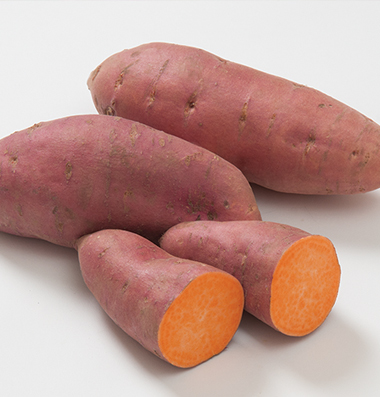
- Sweet potatoes can be dug whenever they reach the desired size, but should always be harvested prior to frost as the plants and roots will be damaged otherwise.
- Clip vines at soil surface and dig tubers with fork.
- Handle tubers very carefully to avoid damaging skin; do not wash.
- Cure tubers in a warm (85°F / 29°C), dark place with good ventilation and 85% relative humidity for
5–7 days. - Place tubers in crates or vented boxes and store in dark at 60°F (16°C) and 85% relative humidity. Do not allow the storage temperature to drop below 50°F (10°C), as this will chill and injure the tubers.
- Once cured, store the tubers for 3–4 weeks before selling and/or consuming for better sugar content and eating quality.
- Properly handled tubers can be stored for 7 months or more.
Turnips—Cold & Moist
- Harvest turnips when the roots have reached the desired size.
- A light frost can enhance flavor.
- May be waxed, but this is not necessary.
- Store at 32°F (0°C) and
90–100% humidity.
Tip: 'Purple Top White Globe' can be kept up to 4–5 months under the above conditions.
Alliums
Garlic—Cool & Dry
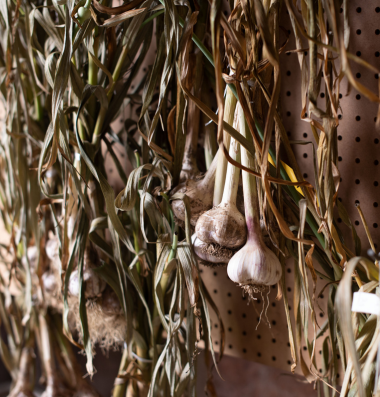
Garlic hanging to cure. Garlic stores well under cool and dry conditions.
- Harvest garlic in summer, when the bottom leaves are beginning to yellow and 3–5 lower leaves turn brown. Depending on climate and seasonal conditions, this can occur from June through August. Do not leave the crop in the ground too long, or the bulbs will separate and rot.
- Dig garlic with a spading fork, being careful not to bruise the bulbs. Brush off the excess soil before curing and storing the bulbs.
- After harvest, curing (partial drying) is essential to prevent decay during storage. Cure in a warm, shady place with good air circulation such as a barn, garage, or attic. Gentle air flow is important; do not point a fan directly at the curing bulbs. To avoid potential damage to curing bulbs, avoid high heat and avoid direct sun at high, late-summer temperatures (such as in a greenhouse). Hang in bundles or spread in a single layer on screens or drying racks. Allow to cure until the neck is dry and the outer skin is papery, approximately 2–3 weeks. The curing process may take longer in periods of cool weather and/or high humidity.
- Store by braiding softneck types or by tying several heads of stiffneck types together and hanging up the bundle. Alternatively, store by cutting off the tops and placing bulbs in a mesh bag, bulb crate, or open container.
- Keep in a cool, dry, well-ventilated location. Optimal storage conditions are 45–55°F (7–13°C) at 50–60% relative humidity. Garlic stored in the refrigerator is likely to sprout.
Leeks—Cold & Moist
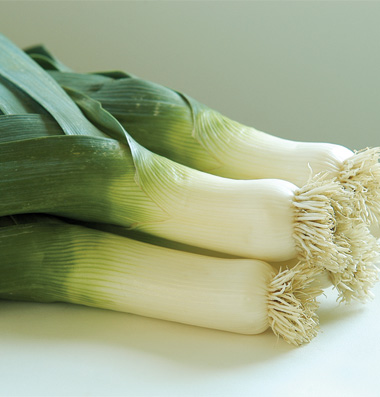
- Leek varieties vary in the length of time they require to reach maturity ("days to maturity" or DTM), and the length of that period is directly related to their cold tolerance:
- Early leeks grow faster and are ready for harvest in late summer to early fall, but they are less cold-tolerant.
- Midseason leeks are ready in fall, and can be relatively cold tolerant.
- Late leeks are ready in late fall to early winter, and are the most cold tolerant. These late types can be held in the field and harvested as needed. In milder climates, plants may overwinter with some protection.
- Harvest early/summer leeks first, moving on to midseason/fall leeks, and then late/winter leeks.
- Lift plants with fork to harvest.
- Plants will store several weeks with either method below:
- Clean plants by trimming tops, roots, and peeling outer leaves. Store in boxes at near freezing (32°F / 0°C) and 95% relative humidity.
- Trim tops and peel any necrotic leaves. Trim roots, but leave an inch or two. Store in a root cellar, plants upright in a container with roots in a moist soil/sand/peat mix. Exposing to some light will keep tops green. Fully trim roots and peel outer leaves as necessary to clean up prior to selling/use.
Tip: 'Bandit' can be stored in the field into winter. For more specifics, see our Leek Harvesting Program.
Onions—Cold & Dry
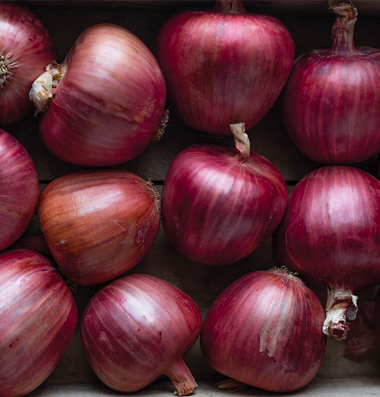
- When necks are soft and tops are falling (about 50% of plot), pull plants and cure in field for
2–7 days, depending on weather. Cure in warm (80°F / 27°C), dry area (barn or shaded greenhouse) if rainy weather is expected. Too much sun exposure can result in bulb sunscald. - Bring in to a protected area (e.g., a barn or shaded greenhouse) and allow plants to finish drying. Ensure adequate circulation, using fans if needed. Laying the onions a foot or further away from walls will also help air circulation. Skins should be dry; necks should be dry and tight, and should not slip when pinched.
- Trim tops to about 1" from bulb, and trim roots.
- Place in mesh bags, crates, or vented boxes. (Lack of air circulation reduces shelf life.) Store in a dark cooler that is near freezing (32°F / 0°C) with
65–70% relative humidity. - Avoid storing with potatoes or other root crops that emit moisture.
- Sweet/mild onions have much higher water content, and thus will not store longer than a few weeks. Pungent storage onions typically store 4–6 months or longer.
- Sort onions in storage on a regular basis to remove any soft or rotten bulbs.
Tip: Many onion varieties are suitable for storage, but some have greater storage potential than others. For specifics, refer to our Full-Size Onion Comparison Chart.
Shallots—Cold & Dry
- When necks are soft and tops are falling over, pull and sun-cure at least 2–7 days, depending on weather. Move to a protected location to finish drying.
- When dry, clip off tops and roots, and store in onion bags or shallow boxes at near-freezing temperature (32°F / 0°C) and
65–70% relative humidity. - Shallots can last in storage up to 6 months.
Brassicas
Brussels Sprouts—Cold & Moist
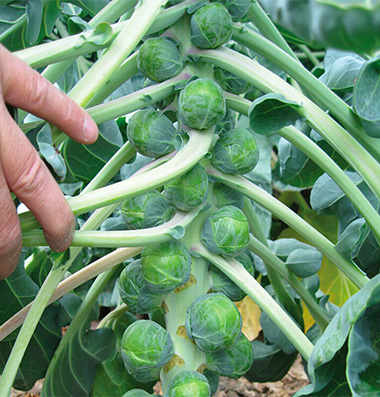
- Harvest when heads are about 1" in diameter.
- Once cut, they should be stored in perforated bags at 32°F (0°C) and 90–100% humidity.
- Whole stalks can also be harvested and stored for up to 1½ months.
Tip: 'Divino' has good cold tolerance, and can be left in the field to harvest after frost. For more specifics, see our Brussels Sprouts Harvesting Program.
Cabbage—Cold & Moist
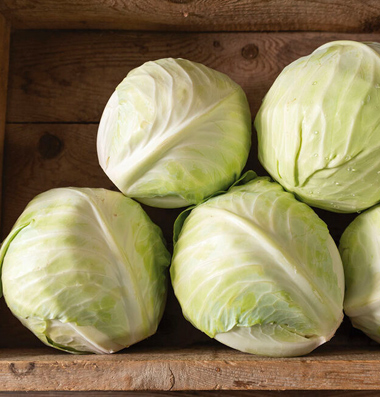
- Harvest when heads are compact and firm.
- Store with a few of the outside wrapper leaves at 32°F (0°C) and
90–100% humidity. - Clean before selling.
Tip: 'Promise' will keep until spring from a late fall harvest if held at the conditions noted above.
Cucurbits
Specialty/Ornamental Pumpkins—Cool & Dry

- Ornamental pumpkins are ready for harvest when color is fully developed.
- Fruits may be left in the field after reaching maturity, but overexposure to sun at this point will reduce fruit and stem (handle) color quality.
- Fruits can tolerate 1–2 light frosts prior to harvest.
- To harvest, clip handles close to vine. Avoid picking up pumpkins by handles, and take care to not damage skin/rind.
- Sun cure in the field for 5–7 days, or cure indoors by keeping fruits at 80–85°F (27–29°C) with good air ventilation for 5–7 days.
- White varieties should be brought in out of direct sunlight once foliage starts to die back; cure inside and keep out of sun to avoid yellowing.
- Some growers prefer to wash fruits with a mild bleach solution after curing.
- Store at 50–60°F (10–15°C), with 50–70% relative humidity and good ventilation.
Tip: 'Long Island Cheese,' 'Musque de Provence,' and 'Baby Bear' are all renowned for their long storage as well as great eating qualities. These pumpkin varieties will keep up to 5 months after frost at the conditions noted above.
Winter Squash & Pie Pumpkins—Cool & Dry
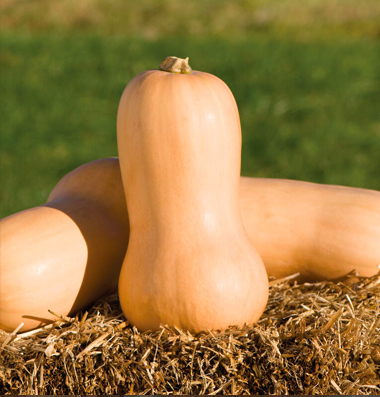
- Winter squash and pie pumpkins are generally mature about
50–55 days after fruit set, and should be harvested before hard frost. - Cut fruits from vines and handle carefully.
- Sun cure in the field for
5–7 days, or, cure indoors by keeping squash at 80–85°F (27–29°C) with good air ventilation for5–7 days. - Store at 50–60°F (10–15°C), with
50–70% relative humidity and good ventilation. Repeated exposure to temperatures below 50°F (10°C) may cause chilling damage. - Storage potential and timing of best eating quality vary by type.
Tip: A good rule of thumb is to sell and/or consume small-fruited varieties first, such as acorns, delicatas, mini kabochas, and mini butternuts. See our convenient Winter Squash Curing & Storage Chart for average curing times and storage potential. To learn more about the factors that govern eating quality in winter squash and edible pumpkins, read our article on Eating Quality in Winter Squash.
Learn More
Remember, it is important to inspect produce and to cull anything showing signs of disease or decay before putting it into storage. Continue to monitor and cull while in storage (disease and decay spread fast). And enjoy!
More Resources from Johnny's
- Winter Squash Curing & Storage Times • Chart
- Guide to Winter Cucurbit Eating Quality & Storage
- The Winter Squash Eating Experience • Article
- Storage of Summer-Harvest Vegetables • Chart



